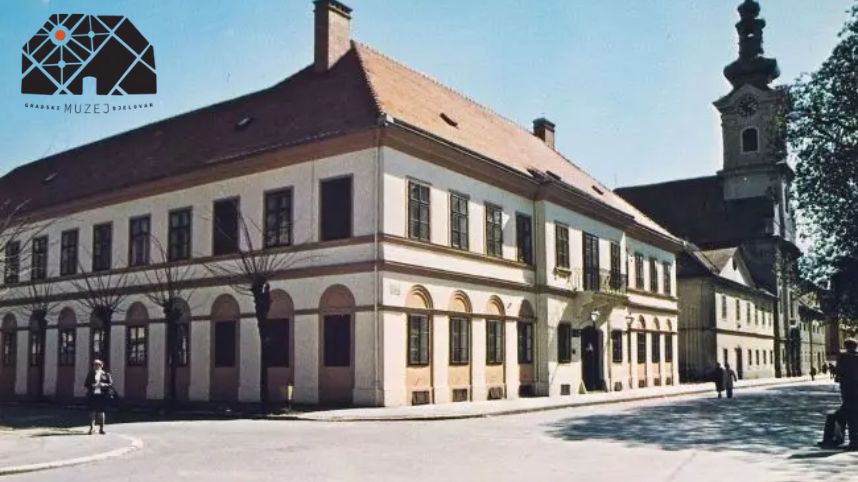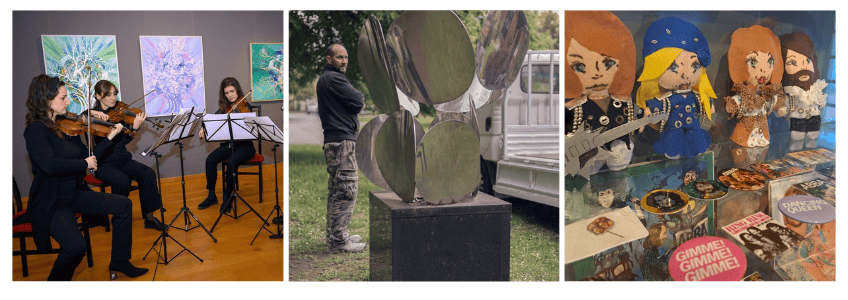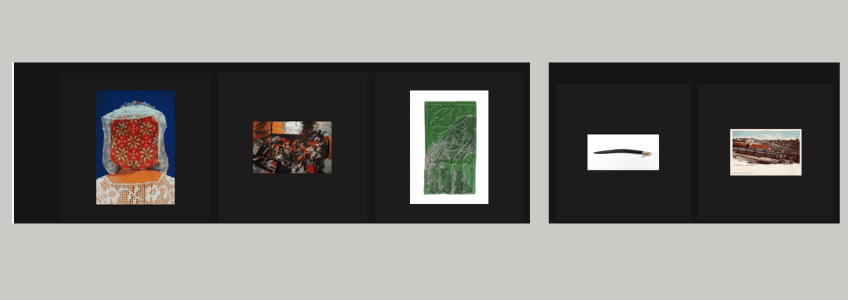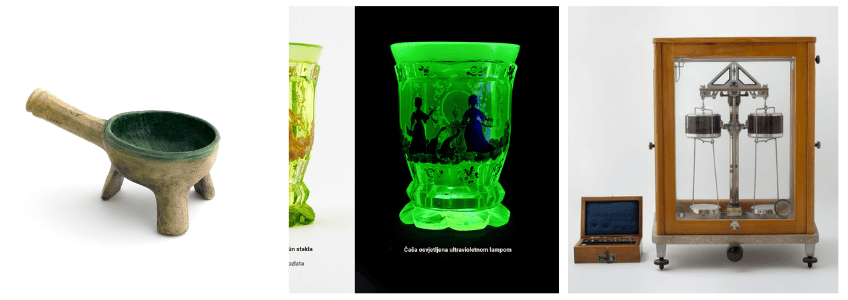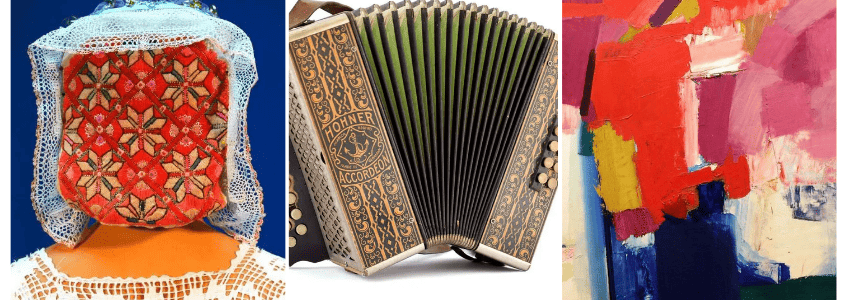A cultural haven celebrating Croatia’s rich history and artistic heritage.
Dive into fascinating exhibitions that weave the stories of ancient civilizations, showcase contemporary masterpieces, and illuminate the diverse tapestry of Croatian culture. Explore, learn, and find inspiration at the museum.
We at the museum are guardians of history and champions of art, dedicated to preserving and celebrating the cultural tapestry of bjelovar. our institution stands as a beacon, inviting visitors to explore the depths of human creativity and the legacy of our heritage.
Mission and vision
The Bjelovar city museum actively collects, preserves, and safeguards artworks, historical artifacts, and other valuable objects that testify to the rich history and culture of bjelovar and its surroundings. it conducts research projects, documents the city’s history, and contributes to the understanding and appreciation of both local and national heritage.
the museum aims to become a cultural hub where the history of bjelovar and its region comes alive through interactive exhibitions, dynamic programs, and innovative museological practices. it seeks to offer high-quality educational programs that foster critical thinking, creativity, and a lifelong love of learning for all visitors, with a special focus on youth.
Masterpieces our featured collection
- poculice
- paintings and sculptures
- fireplaces
- 18th-century weapons
- postcards
Museum departments
Archaeological department
investigates the entire Bjelovar-Bilogora County, which is naturally bounded by the Bilogora ridges to the north and northeast, slopes to Papuk and Ravna Gora in the east, the Ilova River valley to the south, Moslavačka Gora ridges to the southwest, and the Česma River valley to the west.
The oldest human settlements in the region date back to the Neolithic period (around 6000–4500 BC), notably the Korenovska culture. Human activity continued through the Copper, Bronze, and Iron Ages, with artifacts preserved from numerous sites such as Orovački Vinogradi, Drljanovac, Velika Trnovitica, and Ribnjačka. Roman settlements appeared later, with the Lug area near Bjelovar being the most prominent. During the medieval period, before Ottoman incursions, several types of sites with diverse findings existed, including Gudovac – Gradina, Zrinski Topolovac, and Domankuš – Zidine.
Research in the Bilogora region began in the early days of Croatian archaeology, led by Bjelovar Gymnasium professors Gustav Fleischer, Dane Gruber, and Gjuro Szabo, who contributed significantly to documenting rural Croatian heritage. With the establishment of the Bjelovar Museum in 1949, archaeological work gained prominence, although the first professional archaeologist, Božidar Gerić, joined only in 1981. Early field research was notably carried out by the trio Ivan Barešić, Đuro Jakšeković, and Zvonimir Lovrenčević, with Barešić founding a private museum whose collection later became part of the Bjelovar City Museum and partly the Military Museum in Belgrade.
The Cultural-Historical Department of the Bjelovar City Museum
Preserves a diverse range of objects across roughly ten collections, documenting the city’s cultural, social, and economic life since its founding. The most significant is the Sacred Collection, which includes two 18th-century altars from the old chapel in Gornje Zdjelice, along with sculptures, altar panels, candlesticks, and other church inventory items, illustrating the spread of Baroque style in sparsely populated areas affected by Ottoman incursions.
The department also holds Jewish religious artifacts, reflecting the historical role of the Jewish community in Bjelovar’s social and economic life until World War II. Its library collection features rare books, including a late 16th-century leather-bound wooden book with depictions of the four evangelists. Furniture and decorative objects made of glass, porcelain, and metal demonstrate the city’s civic culture, introduced largely by German military settlers, and trace stylistic development from Classicism to Art Nouveau.
Key items include an 18th-century baroque cabinet, representative cabinets, secretaries, clocks, seating furniture, and objects from city institutions such as pharmacies, the first Croatian savings bank, the old Partizan cinema, and the Bjelovar theater of the 1950s. Preserved glass objects include 18th-century rococo glasses, a Biedermeier glass in distinctive green due to uranium, and a glass flycatcher, all of high artistic, craft, and museological value.
Everyday objects such as cutlery, dishware, clothing, fashion accessories, packaging, and perfumes illustrate both the stylistic evolution of material culture and the lifestyle and living standards of Bjelovar’s residents from its founding to the present.
Historical Department
The Historical Department of the Bjelovar City Museum traces the city’s history from the Middle Ages to the 20th century through thousands of objects organized into ten main collections: Documents, Charters, and Archives; Numismatics; Metal Objects; Guild Collections; Photography and Albums; Technical Collection; Weapons, Military Equipment, and Militaria; Posters; Modern History; and the Homeland War Collection.
The department’s origins trace back to the museum’s early focus on the Workers’ Movement during the National Liberation War (NOB), later expanding to a broader cultural-historical presentation with archaeology. Early collections were enriched by private collectors Barešić, Korčmaroš, and Karner.
Notable items include medieval Slavonian coins (banovac), 18th-century artifacts, fair and guild charters, firearms and bladed weapons, a 19th-century design of the City Hall building, the flag of Bjelovar-Križevci County, photographs of citizens, organizations, and events, a World War I officer’s ceremonial blouse, the leather coat of national hero Grga Jankes, early radio and TV devices, military uniforms and photographs from the Homeland War, and contributions from donor Leo Fingerhut.
Key milestones in the museum’s presentation include the opening of the Homeland War exhibition in 2012, an expanded historical display in 2018 covering the period from the Middle Ages to the disbandment of the Military Frontier in 1871, and the 2022 thematic exhibit illustrating Bjelovar’s transition from a military to a civilian city. The comprehensive presentation includes subsections on Bjelovar as a civilian city, the Bjelovar Affair, Bjelovar-Križevci County, urban development at the turn of the century (economy, first societies, city construction), World War I, the interwar period, World War II, and Socialist Yugoslavia.
Ethnology Department
The Ethnology Department is, alongside the Historical Department, the largest department of the Bjelovar City Museum. From the museum’s founding, ethnologist Višnja Huzjak, followed by Zvonimir Lovrenčević – Kvak, actively collected ethnographic material from the Bilogora and Northern Moslavina regions. Through fieldwork, acquisitions, and citizen donations, a diverse collection was assembled and organized into several ethnological collections.
The department includes the following collections: Village Furniture; Folk Customs and Beliefs; Handicrafts; Agricultural Tools; Dishware; Utilitarian Textiles; Souvenirs, Replicas, and Toys; Footwear, Clothing, and Jewelry; Works of self-taught sculptor Evica Pocrnić; and a collection of Greeting Cards and Postcards.
The Ethnology Department continues to develop in the modern era, maintaining a significant and recognizable role within the Bjelovar City Museum.
Music Department
One of the main research goals of the Music Department is to document the civic and civil musical life of Bjelovar during the 19th century.
Music in Bjelovar can be traced almost to the city’s founding, largely thanks to the military band of the 16th Infantry Regiment, which was based in the city.
The museum library preserves musical materials from the Bjelovar Music Society, including both printed and handwritten scores arranged by local bandmasters.
This collection reveals the names of conductors and composers closely connected to Bjelovar through their life and work, such as Josip Bis, Antonin Motal, and Ivan Barešić.
Gallery Department
The Gallery Department of the Bjelovar City Museum systematically collects, processes, and exhibits visual arts, including painting, sculpture, and artistic photography, as well as related forms of visual expression.
Although the museum was originally founded as a general museum with diverse collections focusing on the history of Bjelovar and its surroundings, artworks—especially by local artists—have been collected from the very beginning. Through purchases and donations, the Gallery Department now holds a rich collection of over a thousand paintings, prints, sculptures, and artistic photographs organized into ten collections.
The most significant collections include the Nasta Rojc Collection and the Vojin Bakić Collection, both key parts of the museum’s permanent exhibition. These artists, each prominent in their time and style, played crucial roles in the Croatian art scene of the 20th century while maintaining strong ties to Bjelovar through birth or direct work.
Other strategically important collections include the Local Artists Collection, which highlights painters and art educators connected to the local area (e.g., Ivo Friščić, Josip Zeman, Zlatan Vrkljan), and the Contemporary Art Collection, encompassing a broad range of artists from the latter half of the 20th century to the present who actively contributed to recent art developments. Many of these works were acquired or donated following exhibitions organized in the museum’s gallery.
Artists represented in the collection include Miroslav Šutej, Josip Vaništa, Edo Murtić, Omer Mujadžić, Vasilije Jordan, Milan Konjović, Nikola Koydl, Ferdinand Kulmer, Tihomir Lončar, Đuro Seder, Frane Šimunović, Antun Šojat, Zlatko Šulentić, Mladen Veža, Krešimir Nikšić, and Nives Kavurić Kurtović, whose works form part of the canon of Croatian modern and contemporary art.
Events calendar: discover what’s happening at the museum.
More about us and our work can be found here.
